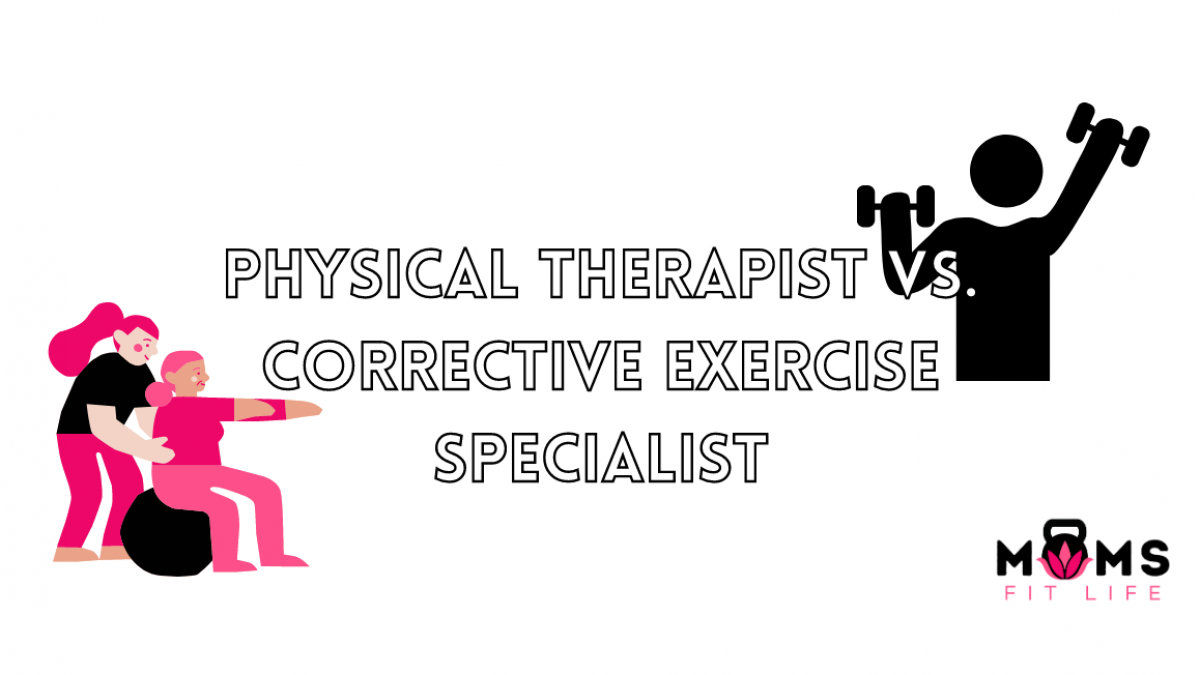Physical Therapist Vs. Corrective Exercise Specialist

What is the difference? Is there a difference?
When I say, I am Jen and I am a Pregnancy and Postpartum Corrective Exercise Specialist, what comes to mind? What does that mean to you?
When you hear the term Physical Therapy, most people could describe what their job is and what a session might look like. When you hear the term Corrective Exercise Specialist, there are questions, concerns, and a lot of unknowns.
It is important to understand a few things, physical therapists and corrective exercise specialists have very (if not the same) goals for patients; to help individuals improve their physical well-being. In both cases, CES and PTs are healthcare professionals who focus on movement, and musculoskeletal (bones, joints, and muscle) function.
It is because of this common goal, that they can and often do work together to create a comprehensive program for a client and have a deep understanding of each other. Yet, there are some key differences and therefore result in different needs.
First, let us go over the differences.
Both the PT and the CES can assess movement patterns, muscular imbalances, and postural issues. A PT does so with exercise-based interventions but also manual therapy, modalities, patient education, and more. In other words, they can use machines, visual assessments, and also their hands to make the diagnosis. When it comes to Pelvic Floor Physical Therapists specifically, this also means they can actually do a manual assessment of the pelvic floor. A CES has multiple different visual and movement assessments that help make a diagnosis.
Both PTs and CES work with individuals who are looking to improve their fitness, prevent injuries, and enhance performance. However, Physical Therapists work with clients who have a variety of medical conditions, injuries, and movement-related issues. They treat patients across the lifespan, from infants to the elderly, and address a wide range of orthopedic, neurological, and cardiopulmonary conditions.
A PT uses a multidimensional approach that includes manual therapy, therapeutic exercises, modalities (such as ultrasound and electrical stimulation), patient education, and functional training. They often work in healthcare settings such as hospitals, clinics, rehabilitation centers, and home health care. In some cases, Pts have limited knowledge of lifting and strength training practices (there is just so much information and that is not necessarily their priority). Whereas, CES professionals provide exercise-based interventions to address movement imbalances and musculoskeletal issues. Their approach may include stretching, strengthening, mobility exercises, and movement re-education.
Second, I want to help you understand why this matters.
Oftentimes, most women are missing care and support physically when going through pregnancy and postpartum care. In a perfect world, women would be given doctor's orders or required to see a Pelvic Floor Therapist during pregnancy and postpartum. If a mom (pregnant or postpartum) is looking to maintain or improve fitness, then they should be working with the PT and their connected CES. In other words, I think all Physical Therapists should have a Corrective Exercise Specialist Partner. A CES also becomes important when the client "graduates" PT or runs out of insurance coverage. With the assessment and plan provided by the PT, a CES can easily take over. Often for a much cheaper rate and with the ability to improve more than just the "affected" area. A good CES can help you continue to strengthen, progress, and prevent further injuries.
I am not telling you this to say PTS are bad! Or CES are the best! Instead, I am telling you this because there is and should be a space for both at the same time, and then to understand how to continue after PT ends.
It is very common for people to finish with a PT, and wind up needing it again shortly after or going back for a new problem. Instead, if the PT can then recommend a CES, the client can continue to strengthen and improve while avoiding future injuries.
Hopefully, knowing the difference and the commonalities, helps you realize there are more options, and that growth and healing do not need to end with cost limitations, and that you can utilize multiple specialists for an amazing whole approach.
Live Life Confidently!
Jen
 Jen Landry
Jen Landry 